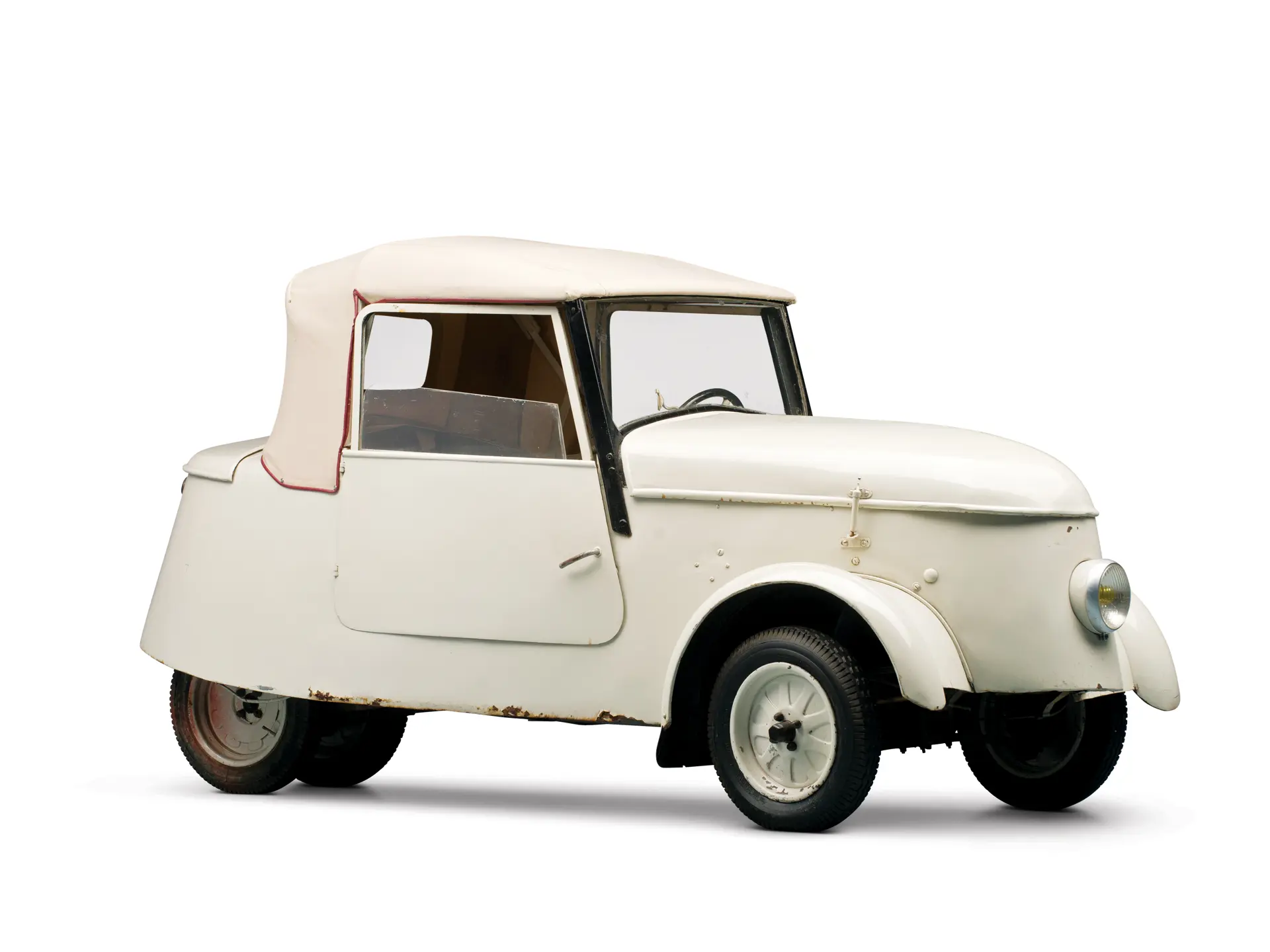

The Peugeot VLV (Véhicule Léger de Ville or "Light City Car") was a small electric microcar produced by Peugeot from 1941 to 1943 in response to the severe fuel shortages in France during the German occupation in World War II. It was the first series-produced electric vehicle from Peugeot.
Overview and Purpose
Faced with the rationing of petrol and the requisitioning of conventional vehicles, Peugeot developed the VLV as an essential transportation solution for essential workers like doctors and postal employees. It was an austere, economical, two-seater mini-cabriolet designed strictly for urban use. A total of 377 units were produced before German occupying forces halted production, reportedly because its independence from fuel was deemed "subversive".
Unique Features
Narrow Rear Track: The VLV featured a wider track at the front and a very narrow track at the rear, dispensing with the need for a differential for the driving wheels.
Charging: The vehicle could be charged from any standard electrical outlet, a practical solution for the time.
Design: It had a unique, cyclecar-like design with covered rear wheels and a single headlight, reflecting its minimalist, utility-focused purpose.
Collectibility: The VLV is now a rare collector's item, representing a unique chapter in automotive history and an early example of electric mobility born out of necessity.